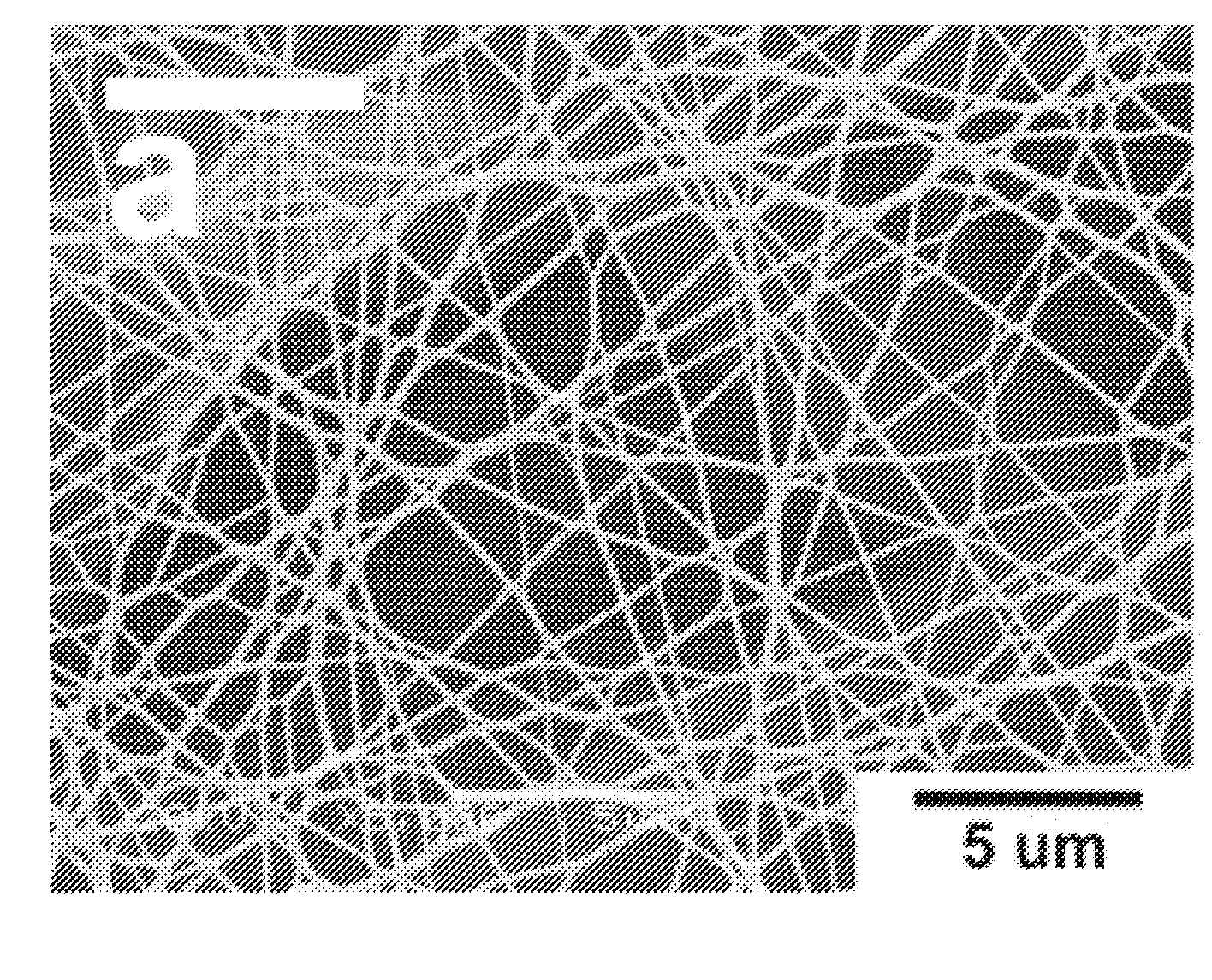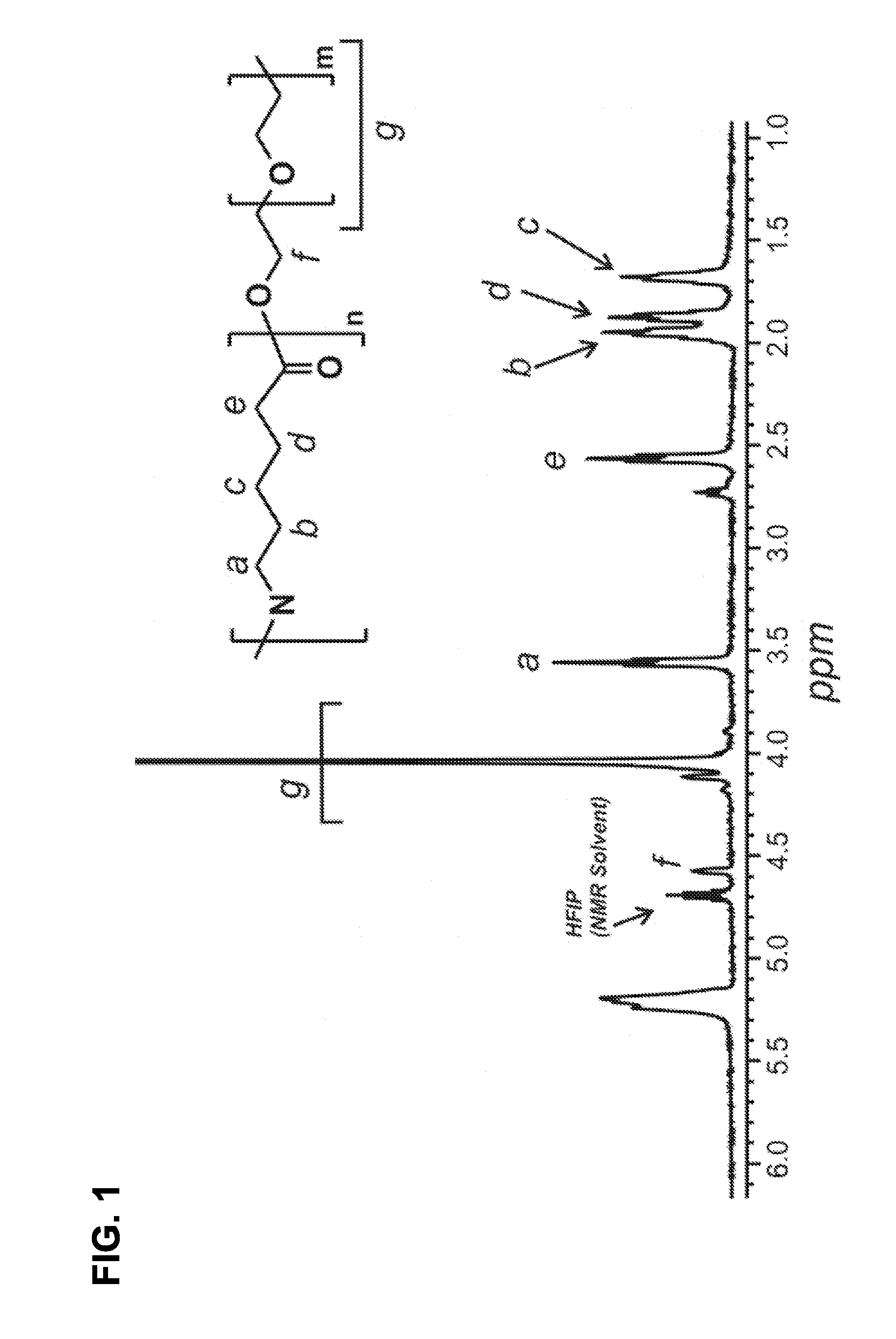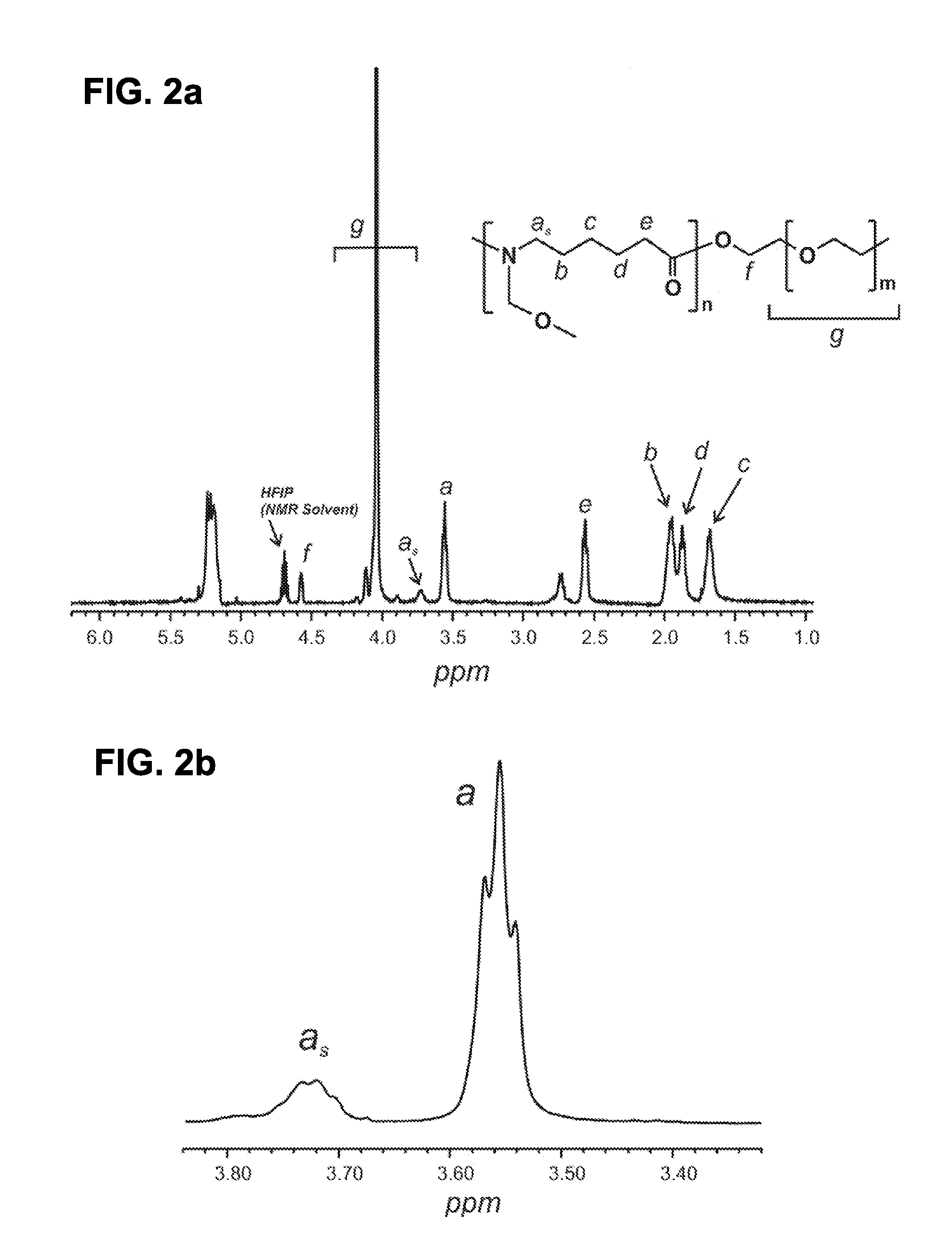Polyamide Fine Fibers
a technology of polyamide and fine fibers, applied in the field of fibers, can solve the problems of limiting the application of polyamides, adding significant processing costs, and affecting the quality of materials
- Summary
- Abstract
- Description
- Claims
- Application Information
AI Technical Summary
Benefits of technology
Problems solved by technology
Method used
Image
Examples
example 1
Synthesis of N-methoxymethyl-poly(ethyleneoxide-b-amide) (N-PEO-b-PA)
[0034]Formic acid (≧96%, 104.19 g, 2.26 mol) was added to a glass kettle sealed with a 3-neck glass lid. The kettle was then equipped with a condenser, temperature probe, mechanical stirrer, and a heating mantle. The solution was heated to 60° C. and PEO-b-PA (12.73 g) was added and stirred until the polymer was fully dissolved. Paraformaldehyde (95%, 3.42 g, 1.14×10−1 mol) was added to 4.4 mL methanol in an Erlenmeyer flask. Potassium hydroxide (50 mg) was added to the paraformaldehyde-methanol mixture and the solution was heated to 60° C. with stirring. The paraformaldehyde solution (3.3 mL) was added dropwise via syringe into the PEO-b-PA formic acid solution over 1.25 hours. The reaction mixture was cooled and the polymer was precipitated in 500 mL THF. The precipitated polymer was neutralized with NH4OH and washed repeatedly with 500 mL aliquots of DI H2O. The polymer was dried in a vacuum oven at room tempera...
example 2
Solution Preparation of N-PEO-b-PA
[0035]N-PEO-b-PA (1.226 g), prepared in Example 1, was added to a glass vial filled with an ethanol / water cosolvent mixture (10.7 mL, 82 / 18 wt % EtOH / H2O) and the polymer was stirred until dissolved. An aliquot of this solution (3.46 g) was added to a glass vial and p-TSA was added and stirred to a final concentration of 1.37×10−2 M.
example 3
Solution Preparation of Nylon-6,66,PACM6
[0036]Two hundred grams of nylon-6,66,PACM6 (p-aminocyclohexyl-methane adipate), a polyamide copolymer comprising bis-(4-amino-cyclohexyl)-methane, adipic acid, hexane diamine, and ε-caproloactone, was placed into a 4000 mL glass kettle filled with a cosolvent mixture of ethanol and water (2185 mL, 80 / 20 wt % EtOH / H2O). The glass kettle was sealed with a 3-neck glass lid and equipped with a mechanical stirrer, a temperature probe, and a condenser. The glass kettle was placed in a heating mantle and solutions were stirred for 3 hours at 60° C. until the polymer was fully dissolved. The solution was then cooled to room temperature and stirred for an additional 3 hours to a yield 10 wt % homogeneous solution.
PUM
| Property | Measurement | Unit |
|---|---|---|
| Diameter | aaaaa | aaaaa |
| Diameter | aaaaa | aaaaa |
| Fraction | aaaaa | aaaaa |
Abstract
Description
Claims
Application Information
 Login to View More
Login to View More - R&D
- Intellectual Property
- Life Sciences
- Materials
- Tech Scout
- Unparalleled Data Quality
- Higher Quality Content
- 60% Fewer Hallucinations
Browse by: Latest US Patents, China's latest patents, Technical Efficacy Thesaurus, Application Domain, Technology Topic, Popular Technical Reports.
© 2025 PatSnap. All rights reserved.Legal|Privacy policy|Modern Slavery Act Transparency Statement|Sitemap|About US| Contact US: help@patsnap.com



